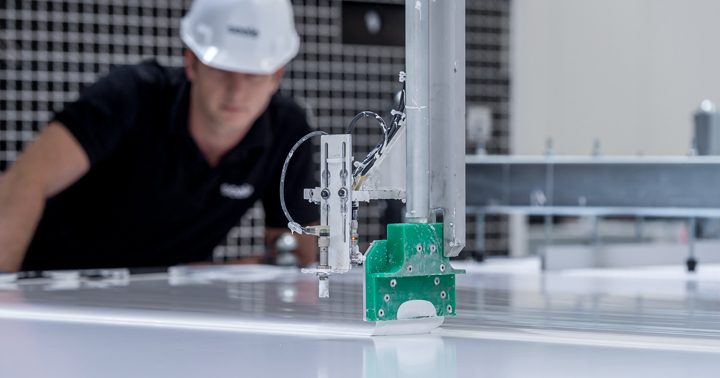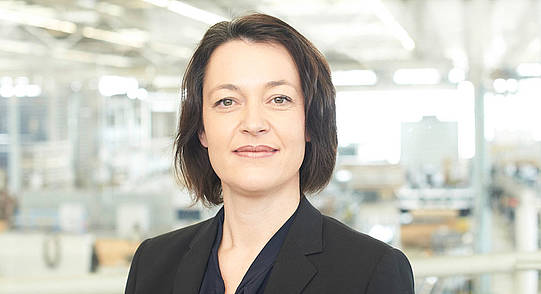Façades specialist seele employs state-of-the-art adhesives technology and meets highest DIN 2304-1 quality criteria
Almost all the construction projects completed by façades specialist seele in recent years have included bonded joints – from straightforward sealed connections right up to structural joints without any mechanical fasteners. seele’s wealth of experience had already led to well-developed adhesive bonding procedures plus corresponding QA measures. That professional approach has now been confirmed through the DIN 2304 certification. This standard is valid across all branches of industry and serves as a guideline for adhesive joints. It describes the process chain for bonded connections, covering everything from tender submissions to the maintenance or repair of bonded components. As it is virtually impossible to check the quality of bonded joints non-destructively, great care must be taken during every single step in the process. In this respect, DIN 2304, which outlines the various processes, is important because it specifies the state of the art. For example, in recent years seele has invested a great deal in special training for its own workforce; with DVS-EWF courses for adhesive bonders, adhesive specialists and adhesive engineers, all our staff are suitably trained.
Why are adhesives used more and more in modern architecture?
Today’s architectural designs often include smooth surfaces with maximum transparency and minimal supporting structures. Neither glazing bars nor mechanical fasteners are allowed to disrupt the appearance. For this reason, structural adhesive joints are being used more and more in all-glass designs. “Adhesive bonding is the jointing technology of the 21st century. Not just because it is possible to join different materials, such as glass and aluminium etc., but because the adhesive joints also provide loadbearing functions. Adhesive bonding ensures that loads are evenly distributed and guarantees elasticity to cope with thermal expansion and wind loads,” explains Horst Erhard, European Adhesive Engineer (EAE) at seele.
seele projects with special adhesive joints
Adhesive joints are used in nearly all of seele’s projects because design and function then complement each other. With its all-glass entrance made up of panes joined by silicone adhesive only, the Apple Retail Store in Milan demonstrates minimal structure and maximum adhesives expertise. The adhesives were applied on site. Quality control for such in situ adhesive joints is much harder, which is why appropriate measures have to be taken on the building site in order to guarantee excellent quality. Another example is the 42m long glass roof at Place Ville Marie in Montréal, which consists of just 18 insulating glass units. These 15m long x 2.5m wide units, weighing up to 5.6t, are supported on 8-ply laminated glass beams, which are also 15m long. In compliance with the architects’ design, the corbels supporting the beams are hidden in the walls, so the roof appears to “hover”, ensuring maximum transparency. Here again, adhesive joints in structural glazing quality were used to secure the roof against uplift due to wind.
“As a façade construction specialist, we have been following the topic of adhesive bonded joints in architecture for many years. We have gradually expanded our expertise and built up a team with appropriate skills. Especially when it comes to safety, adhesive joints must comply with the very highest quality standards. Certification according to DIN 2304-1 is an important step, but comprehensive testing on our own testing grounds still remains the most important means of checking our façade designs,” says Siegfried Gossner, director and co-founder of the seele group. “What really characterises us is how we are constantly pushing back the boundaries of technology. We are a member of the DIN standards organisation and therefore take part in standardisation work, which means transferring technical innovations to the state of the art.”

© René Müller
